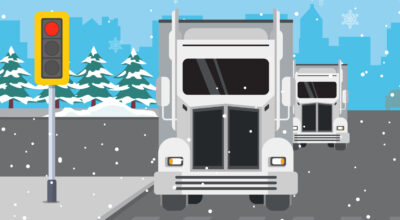Safety incentive programs: Why your company needs one & how to get started

Workplace wellness programs. Diversity and inclusion programs. Employee reward programs. The idea of creating one more workplace program may make you wonder where it all ends.
However, there is great value in creating a safety incentive program—especially for companies that employ drivers. Here, we talk about what this type of program looks like and the benefits it provides for transportation businesses. We also offer a few tips for getting a safety incentive program off the ground.
What is a safety incentive program?
As its name indicates, a safety incentive program is a program that incentivizes workers to take actions that promote safety in the workplace. Essentially, it provides some type of reward for actively engaging in workplace safety protocol.
In some cases, a safety incentive program is injury or illness-based. For instance, the company may reward employees if the number of workplace injuries stays below a certain amount.
The program can also be behavior-based. An example of this would be to reward employees who engage in the required safety protocol for a certain number of days in a row.
Safety incentive program benefits for transportation businesses
At a minimum, an injured employee is limited in their work abilities. Worst case scenario, they’re off work completely. So, incentivizing workplace safety is one way to keep more employees on the job.
Another benefit of a safety incentive program is that it reduces the costs that occur when safety isn’t a concern. If a driver fails to secure their load, for instance, your company faces a host of expenses. Among them are:
· Medical costs for your driver and anyone else injured should the load unexpectedly release
· Damage costs to your truck, any other vehicles struck, and any other property damaged
· Court costs should an innocent party sue your company for failure to enforce safe transportation protocol
Failure to make safety a priority can also harm your reputation. If you become known as a company that doesn’t seem to care about the safety of its employees or those potentially impacted by unsafe workplace practices, other companies may decide not to do business with you. Consumers might revolt as well, boycotting any company that uses your services—which tends to happen more regularly in today’s cancel culture.
Reinforcing employee safety can even help boost retention. If an employee feels that the company supports a safe work environment, your business becomes a more desirable place to work. Their family has greater peace of mind as well, safe in the knowledge that their loved one isn’t at great risk simply from clocking in for work.
How to create a safety incentive program
When creating a safety incentive program, it helps to first consider where any existing issues lie. Are workers in certain positions getting injured at a higher rate? Does the operation of a specific piece of equipment tend to be a regular safety issue?
Next, consider your areas with the greatest risk. Make a list of the departments or positions within your company that are the most susceptible to problems if safety is not enforced. Think also about the equipment that poses the greatest safety risks.
It can also be helpful to consider what workplace safety looks like in a perfect world. What actions would your employees be taking every single day if safety was a priority? Would your drivers not exceed a certain speed or wear their seat belts? What would their truck safety inspection look like before even leaving the lot?
Information collected from these three steps—considering your current safety issues, knowing where the company is most at risk and what a safe work environment looks like—will help dictate the actions and behaviors you want to reward. The next step is to decide what those rewards will be.
Ideas to consider include:
- Branded apparel that recognizes the safety achievement (such as a jacket that, under your logo, says “5 Years of Safe Practices”)
- Recognition at a workplace meeting or in the company newsletter
- Income bonus payments for each year safety is achieved
- Gift certificate to a local restaurant
- Tickets for a major event
Come up with a few smaller rewards that employees can strive for regularly, such as monthly, quarterly or bi-annually. Also include bigger rewards to recognize those that maintain safe practices every year, every 5 years or every 10 years.
There are several benefits of taking the steps needed to create a safe work environment, such as ours at Centerline. A safety incentive program helps reinforce safety as a priority, making your company not only a good place to work but also a company that is admired community-wide.
Not sure how to get drivers to motivate your drivers to follow your safety program? Here are a few tips to get you started.
Want more safety tips? Download our free driver safety guide here.


